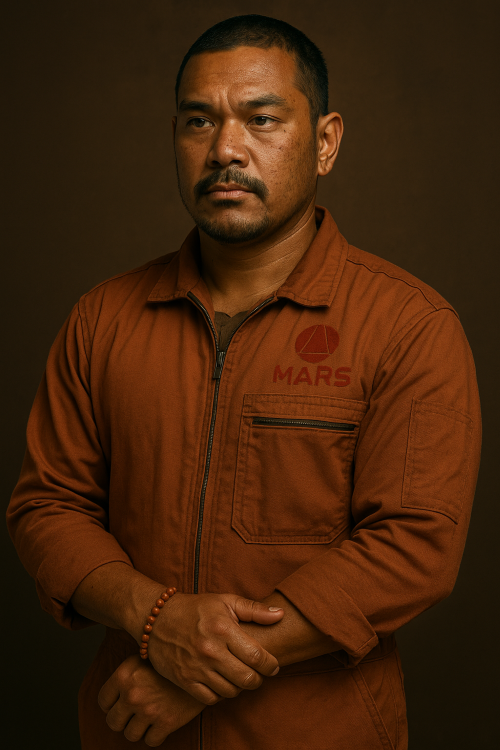Martian Orthodox - Overview

Origins
The Martian Orthodox Church was born in the early generations of colonization, when settlers from China, India, and Texas found themselves struggling to survive in the harsh Martian environment. Bound by necessity, their traditions and philosophies blended into a new faith rooted in mutual responsibility and collective self-discipline. The name "Orthodox" was chosen not to mimic Earth religions, but to evoke a sense of continuity, order, and reverence for tradition amidst the chaos of planetary transformation.
Core Beliefs
At its heart, Martian Orthodoxy teaches that salvation is terrestrial. One’s path to spiritual enlightenment is inseparable from the work of building Mars into a sustainable, flourishing world. The red planet is not a punishment or exile—it is a sacred responsibility.
- The physical world is sacred, and Mars is to be cultivated as an inheritance.
- Individual advancement must serve planetary and communal progress.
- Discipline, humility, and industry are forms of worship.
- The divine resides not in distant heavens, but in effort, improvement, and self-awareness.

Core Doctrines
- Red Ascension – Humanity’s moral evolution is tied to the greening of Mars. As Mars transforms, so too must the soul.
- The Dust Covenant – Each adherent pledges a vow of simplicity, rejecting luxury to remain focused on collective goals.
- Doctrine of Triple Duty – A faithful must contribute to:
- The Self (through reflection and discipline),
- The Community (through service),
- The Planet (through labour and stewardship).
- The Sacred Cycle – All resources—material, biological, spiritual—must be recycled. Waste is sacrilege.
Practices and Symbols
- Meditation at Dawn and Dusk: Practiced facing Olympus Mons, symbolizing aspiration and perseverance.
- Fasting Days (Red Quiet): Weekly periods of silence and abstinence from all unnecessary consumption.
- Tatara Beads: Worn bracelets made from Martian hematite, each bead representing a commitment made or debt repaid.
- The Crimson Thread: A red thread worn around the wrist or ankle by initiates, cut only after their first successful terraforming contribution.
- Proscription of Meat and Excess: Animal products are forbidden. Residences are minimalist and self-cleaning.
- Devotional Work Logs: Daily records of one’s contributions to Mars, reviewed monthly with a spiritual advisor.

Spread and Structure
Initially concentrated in the Martian interior cities like Dhanbad Nova and Londres Nova, the faith spread through infrastructure crews, terraforming engineers, and agronomists. It has since developed a semi-hierarchical structure:
- The Synod of Tharsis: A council of elders and engineers who debate doctrine and assign spiritual tasks.
- Local Circles: Autonomous community groups that guide worship and coordinate local planetary service.
- Redwalkers: Missionaries and advisors who live among less developed Martian outposts, offering education and coordination aid.
The faith has minimal presence outside Mars, where its doctrines are often seen as overbearing or irrelevant.
Doctrine Tenets
| Tenet Name | Description |
|---|---|
| Labor is Prayer | Productive labor that aids Mars is equal to any ritual or sacrament. |
| No Salvation in Silence | Speech must lead to clarity or action—idle talk is discouraged. |
| Tend the Dust | Environmental stewardship is the highest form of penance. |
| Dignity Through Effort | One’s worth is measured not by wealth but by service and struggle. |
| The Soil Recalls | Nothing is forgotten—every act leaves an imprint on Mars and the soul. |
Controversies and Reactions
- Terran Backlash: Earth-based humanists and technocrats criticize the Martian Orthodox Church for being cult-like, overly ascetic, and too entwined with Martian nationalism.
- Red Extremists: Fringe sects within the Church advocate militant anti-terraforming views, believing Mars should remain sacred and unspoiled, even if it means stagnation.
- Belter Skepticism: Belters often view the faith as "another Inners’ tool to keep people digging red dirt for nothing but guilt."
- Corporate Pushback: Terraforming corporations dislike the Church’s refusal to cooperate with for-profit projects and its fierce resistance to ecological shortcuts.